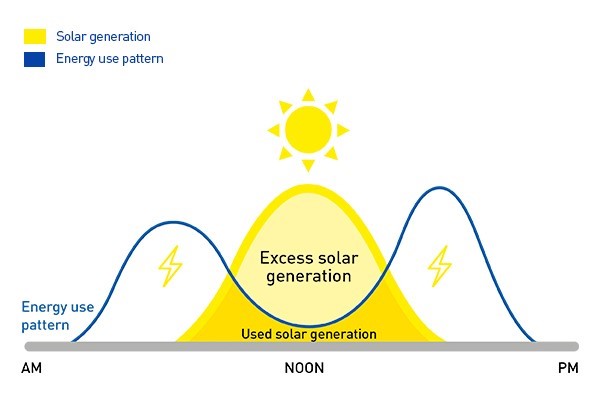Charging your electric vehicle from the grid or your solar battery?

What is the best way to minimise your costs and carbon footprint.
The main argument we need to address is:
Does it make sense to charge an electric car with a home battery?
This is an important argument and one that has merits on either side. Firstly, the average EV battery of (for example) a Tesla model 3 is greater than 70kWh while most home systems range from 5-10kWh. The analogy used often is using a bucket of water to fill a pool.
The reality is to maximise your green energy usage for your electric vehicle we need to investigate a few key points
1. How much do you drive?
2. How big is your solar system?
3. What’s the capacity of your battery system?
4. What electricity consumption is used by the home?
Let’s assume Australia’s electricity generation will only be around 50% renewable. Unfortunately, currently it’s around 18% but states such as Tasmania and South Australia have shown significant progress.
These 4 points allow us to identify the best way to charge an electric car.
Charging an electric car from a solar panels and batteries
Utilising smart electric vehicle charging stations such as the Ocular IQ Solar we can already solar match and ensure that a home’s solar generation is absorbed by the electric vehicle acting as a solar sponge. Redirecting a home’s rooftop excess solar generation allows a home to avoid sending power back to the grid at less than 10c/ kWh and buying it back later at 30c/kWh.
So, here is the points we need to consider.
1. The average Australian drives 40km a day for work. This would require 7kWh of electricity per day to power the vehicle
2. We’ve installed 8kW single phase system
3. Our home battery system is 15kWh
4. We use 10 kWh a night to power the home (high usage)
5. The car is only charged at home
We drive a Tesla Model 3 standard range with 70kWh battery and a 7kW home EV charger linked to our solar panels.
Our example driver is intelligent and plugs in his car every day for a top up charge. He plugs in on Saturday and uses an Ocular IQ Solar to identify solar generation. His home solar system produces a surplus generation of 30kWh over the weekend and this tops up his Tesla. (Please note the Ocular IQ Solar works through CT Clamps to identify excess solar and will require a grid connection to protect the vehicles battery when solar production is very low from micro charging.)
He then goes to work every day and plugs in everyday when he returns from work. He uses around 3kWh of the homes battery before the grid supplements the electricity. He plugs in on Friday but schedules’ his smart home solar charger to turn on when the sun shines on Saturday.
Therefore, in our example the Tesla uses 49kWh of electricity per week as follows.
12kWh of home battery energy produced by Solar
16kWh of grid energy
21kWh of solar directly from his panels.
Based on this our example has used clean energy for 33kW or 68% of his journey. While the grid made up 32% of his charging.
So, using NSW as an example because of its heavy footprint with coal generated electricity we can come to a conclusion on the best way to charge our friends Tesla. In NSW we produce 820kg of carbon dioxide for every 1000kWh or 0.82kg / kWh. Therefore, every week our Tesla would produce as a result of grid electricity 13.12 kg of carbon dioxide or 682 kg of carbon dioxide per year.
The equivalent petrol car that travels 14,600km will produce, 4970kg of carbon dioxide. The Tesla equates to a reduction in emissions of 86% when compared to the petrol car. So, it’s cleaner!
But can we get to zero? Yes, we just need to upsize our solar and battery. What this example shows that if we implement a 20kWh battery we then eliminate all grid based electricity requirement and have no carbon dioxide emission. The trouble lies of course with cost. Home battery systems are still very expensive to set up. Furthermore, if their usage of the vehicle goes up the battery size needs to leap even further.
What we also know is:
1. The grid is getting cleaner
2. Batteries are getting cheaper
Based on all these points if you drive like an average Australian and have an electric car you really should invest in solar panel EV charging and home battery that’s 10kWh or above to help you minimise your carbon footprint. However also note that you can buy 100% carbon offset electricity and so if a battery is one step too far take advantage of clean energy utilities.
All in all, solar panels are a must and batteries are a nice to have but they may not be big enough to power your vehicles everyday usage. If you can afford them. Get them!
Some important points
1. There are losses in electricity where charging a battery and also an EV. Using efficient methods such as a level 2 EV charger is the most efficient charging method. Using an EV charger from a power point can have losses of greater than 30%
2. Battery household consumption varies with lower production in winter and cloudy days reducing generation. The average Australian uses about 10kW of their battery daily.
3. Batteries degrade especially in high usage which an electric vehicle charging from them will cause. Factor into your model replacing them every 10 years
4. .Regarding degradation, the technology is getting better and so batteries
will need to be replaced less frequently over time.



